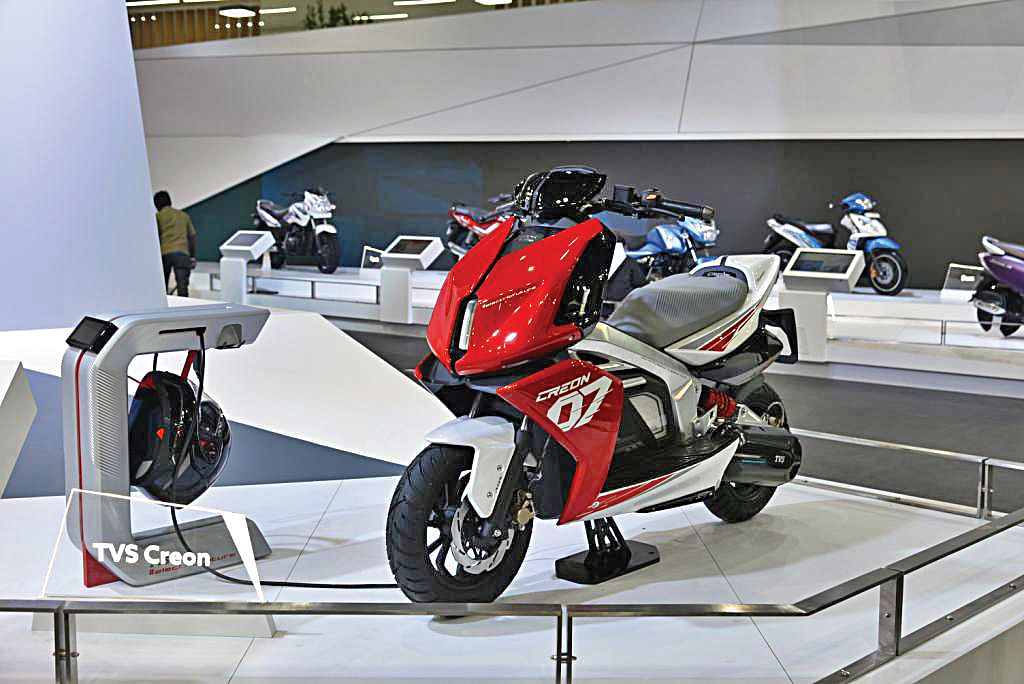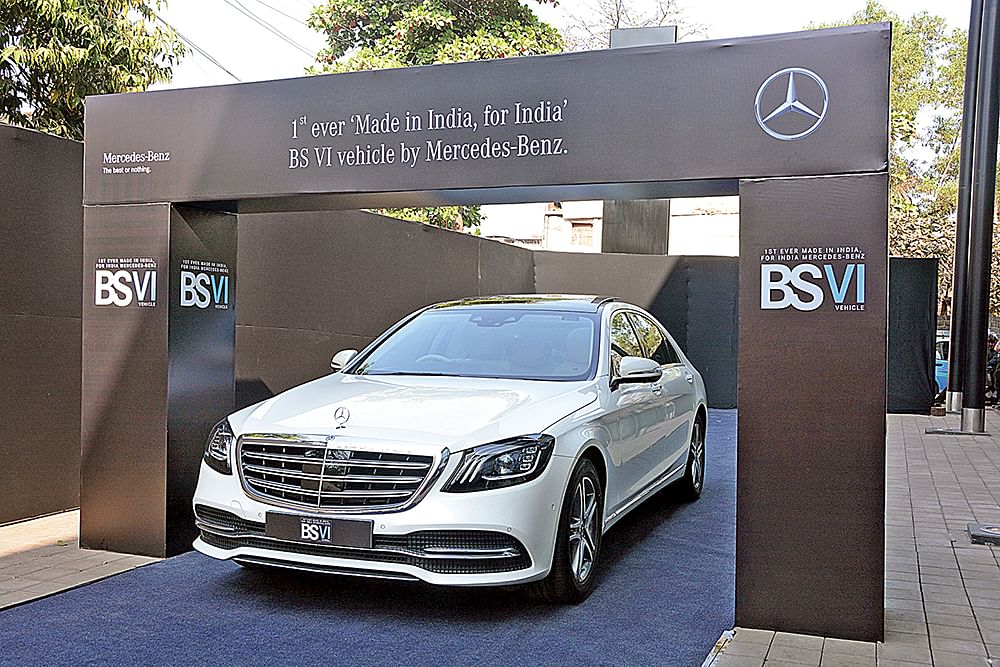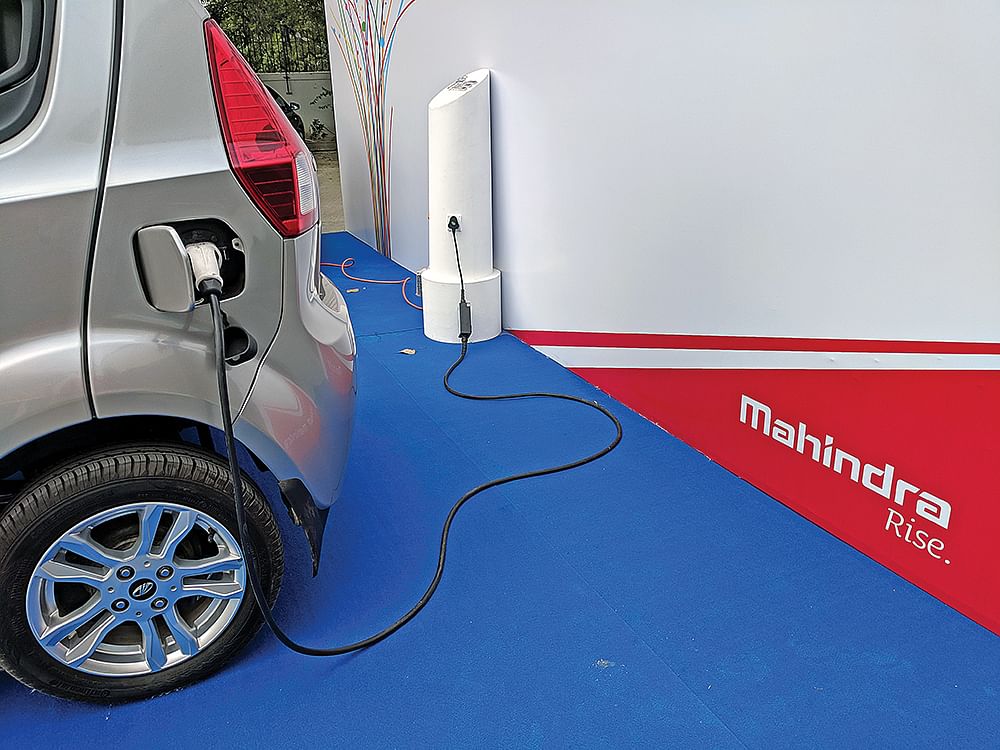Vishnu Mathur: ‘Only when big brands jump into the electric two-wheeler market in India, will the products sell.’
SIAM's director general on envisaging mass-scale electric mobility in India by 2047, industry’s preparedness for BS VI, and why two-wheelers will be the early drivers of electric mobility in India.
The Director General of the Society of Indian Automobile Manufacturers (SIAM) on envisaging mass-scale electric mobility in India by 2047, industry’s preparedness for BS VI, and why two-wheelers will be the early drivers of electric mobility in India.
SIAM's mantra is ‘Mobility for All’. What does it encompass specific to the Indian automobile industry?
What we mean by 'Mobility for All' is sustainable mobility, affordable mobility and safe mobility. When we talk about sustainability, we are talking about the environment, about energy security and carbon emissions. All these factors lead to sustainable growth.
The Indian auto industry is the only one which has moved from a-no-emission-norms scene to BS IV in 10 years (from 2000 to 2010). It was the first time that this was done anywhere in the world.
Then there was a seven-year gap due to all-India fuel availability issues (until 2017). Now, because we want to catch up with Europe, we are again the first country in the world to be able to jump from BS IV to BS VI norms, skipping BS V. This again is to be achieved in a short period, a first time globally.
In terms of fuel efficiency, we have implemented fuel efficiency regulations for vehicles (for passenger cars). We now also have new fuel efficiency regulations, which have been notified for the heavy duty commercial vehicles. And we have already started discussions around this on light-duty commercial vehicles too. CVs are large-scale users of diesel fuel, so they are understood to see a big impact (under BS VI).
Fuel efficiency regulations for two-wheelers will come in the next stage, for which industry is working in tandem with the government authorities. This will not only impact fuel efficiency but carbon emissions will also come down.
On the safety front, we have progressed faster in the past four to five years than over the last 10 years. All these progressions have a huge requirement of manpower, technology and efforts by industry. Now, while we are working on meeting BS VI norms by 2020, we will start work on the electric vehicle movement.
In the context of SIAM’s 2047 vehicle electrification proposal, why is it asking for 17 more years after 2030? Why does it not propose complete fleet electrification by 2035 or 2040?
NITI Aayog has never said that we must be a 100 percent EV industry by 2030. In fact, the Rocky Mountain Institute report, which was compiled for NITI Aayog, talks about 40 percent of all vehicles to be electrified by 2030. They have not given any provision beyond that. We have taken the same vision of NITI Aayog and said that we share NITI Aayog’s and the government’s vision of 40 percent vehicles to be electric by 2030.
However, we have gone one step ahead to say we can have 100 percent electrification (of vehicles) by 2047. That’s a visionary policy. We have gone on to make several recommendations that, if followed, can help achieve the same.

TVS Motor could be the first major two-wheeler OEM to enter the EV space with an electric scooter soon. Seen here is the Creon concept showcased at Auto Expo 2018 in February this year.
I believe that targets and visions should always be ambitious. All stakeholders will work together because we have an ambitious target. That’s exactly what we have done. We have expanded on NITI Aayog’s vision.
Electrification of 40 percent of overall vehicles by 2030 also means that there will still be 60 percent ICE-powered vehicles. That is why we are saying that we must continue the development of ICE engines and the technological improvements on that front.
Internal combustion engines cannot be written off as they will continue to play an important role in the future too. These ICE engines can run on petrol, diesel, methanol, ethanol, bio-diesels, CNG, LPG and hybrids – this is a different matter. These technologies can be used to improve upon the fuel economy, reduce fuel consumption and carbon emissions, and meet the norms that we have committed to. These technologies will co-exist.
No big transformation in technology can happen overnight. It will always be a process. What we need to do is to manage this process so that there is least disruption. A sudden disruption can negatively impact employment in the component industry.
How would you summarise the level of preparedness across the industry for BS VI norms two years from now? Mercedes-Benz India has already launched a BS VI-compliant car and the fuel is also available in Delhi from April 2018.
I think it’s very clear – we have accepted the challenge of 2020. At the early stage itself, when we had accepted the BS VI challenge, we had said that although it was not going to be easy for industry, we would put our best step forward for the sake of our country, our environment and for society at large. This is the all-industry view. There is no difference of opinion on this matter. There is complete consensus on the implementation of the BS VI emission norms, and we have given this commitment to the government.
The Indian auto industry, along with the solutions providers, is working overtime. In fact, most technical staff, engineers and the R&D departments of the OEMs, as well as component manufacturers, are fully occupied with the challenge to meet the BS VI deadline.

In its display of technology strength, Mercedes-Benz India became the first automaker to launch a BS VI-compliant vehicle (an S-Class) recently.
While some companies already have the solutions to meet BS VI norms, others are developing the same. Those who have the solutions and are operating in other parts of the world will have to adapt the technology for Indian conditions, and also validate the running cycles in India. The others will have to design right from scratch, which is going to be a tough task.
The sole advantage I see is that we are not producing products for BS V. This means the components industry is not being asked to invest in making BS V-compliant components. The technology involved in BS V and BS VI is completely different but the fuel quality of BS V and BS VI standards is the same. Once you reach the BS V level fuel, you reach 10ppm sulphur. However, that said, some marginal differences may exist.
Nonetheless, when you talk about pollution, it is the sulphur content that makes the difference. In BS V, you take care of the particulate matter. In BS VI, you take care of NOx emissions. Both are different pollutants that require different technologies. You cannot move to BS VI-compliant vehicles unless you adhere to BS V standards, which we are now doing together.
There is no precedence on how to achieve this in such a short span of time. We are learning on our own on how to achieve this feat. Even all the technology solution providers are saying that this is learning for them too. They are developing their capabilities and competence to do this. So the state of readiness will be there.
There will be some vehicles, which are not made and sold elsewhere in the world but only in India, for which there won’t be any global solutions at all. For such vehicles, we have to design solutions from scratch. These are the challenges that we have.
Do you think electrification of vehicles will find traction faster in two-wheelers compared to the other segments?
I do think that while there are certain sections of the industry which are more amenable to electrification, some are not so amenable. The two-wheeler segment is probably higher up the ladder. The reasons are pretty simple.
People normally do not use two-wheelers for long-distance travelling. That said, some do it for different reasons such as leisure riding. Typical distances covered by a two-wheeler, for a city like Delhi NCR, could be on an average 30-40km per day or even less. So, they are more amenable to a pure electric.
If you get a range of, say, 50km for an electric two-wheeler, you can keep it affordable and can also serve the user without giving range anxiety. Electric two-wheelers can also be charged at homes. So I would say that an electric two-wheeler is not seen as a risky option to commute within city limits.
If you recall, two-wheelers were the first to get electrified years ago. Now when big brands jump into this space, offer quality and performance and when the retail of electric two-wheelers is complemented by the necessary service and spare part support, they will sell.

In its white paper on EVs, SIAM has suggested a roadmap for achieving 100 percent vehicle electrification by 2047.
There is already 12 percent GST on EVs. In our white paper, we have suggested a further reduction of GST to 5 percent for pure electrics. Battery technology is improving by the day. As that improves, two things will happen: costs come down and the energy density of the battery increases, which ends up boosting its performance and offering longer running range per charge.
I am sure that at some point in time the evolving battery technology will reduce the costs substantially and the energy density will improve to a level which will match the per charge running range with the conventional vehicle’s running range under a full ‘tank’. In that scenario, the cost of an EV will be either equal or even better than that of an ICE vehicle.
However, we cannot wait until that time when this happens. So we have to start promoting it, start incentivising it, start developing the technologies and the supply chain, which is very important because you can’t depend only on imported components.
The two main reasons why EVs don’t sell in India today is the price gap and the absence of an EV charging infrastructure.
Nevertheless, I think two-wheelers have higher amenability to electrification. I see buses very amenable too as for them a dedicated charging infrastructure can be set up at select points such as depots and on fixed routes. Battery swapping technology is also a good idea to promote electrification in buses.
(This interview was first published in Autocar Professional's April 15, 2018 issue)
RELATED ARTICLES
India: A Bastion Of Stability for Schaeffler
German autoparts maker Schaeffler’s CEO, Klaus Rosenfeld, describes India’s role in the company’s €24-25 billion empire....
'No Question of Us Being Late' - Suzuki India on e-2Wheeler Market
Suzuki Motorcycle India believes its EV entry is timely as the market is now mature enough to grow off genuine demand ra...
'India Can Become a Major Pillar for Us' - Marquardt Group
Björn Twiehaus, CEO of Marquardt Group, and Vishal Narvekar, the company's India GM, share their outlook on the Indian m...





 13 May 2018
13 May 2018
 12915 Views
12915 Views





 Ketan Thakkar
Ketan Thakkar


 Angitha Suresh
Angitha Suresh

 Darshan Nakhwa
Darshan Nakhwa

